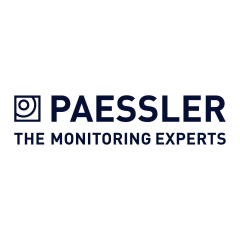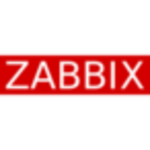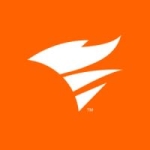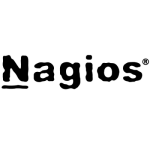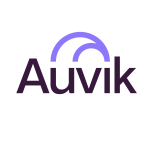What is our primary use case?
I look after the infrastructure side of Lookers. We have 8000 users, 400 various servers, and 190 sites. We've been rolling the product out and are relying on the infrastructure purely for the whole of our business.
How has it helped my organization?
We've managed to cut down on our P1 escalations by around about 70 percent. We have 24/7 monitoring and the notifications are great.
The historical data provided by the solution helps us optimize our network performance. We tend to keep about 100 days worth of logs. Therefore, we can create patterns in terms of load against different times, and downtime, as well. When housekeeping jobs are run, then we get periods where resources are tested and high. So, it's a case for us we're able to use scalability, across Azure and AWS for Elastic. Thus, it's helped us in terms of planning our actual infrastructure against performance and things.
This solution provide us with needed feedback on our IT infrastructure for management reporting. Stats-wise, we're able to get reporting out-of-the-box from PRTG. For our executive board, we're able to provide valid stats of what we are saving in terms of revenue in regards to the infrastructure of our business.
What is most valuable?
It is a central solution in terms of how to actually use it. It has a very easy dashboard. Everything is concise. We are able to create custom sensors. For different parts of the business, we have many products across many environments, and it works for everything.
It is very broad in regards to what it can actually cover. We look after corporate environments for websites and SQL Server, and it's just a one stop solution for us. It also works well out-of-the-box.
The remote probes are great because they lessen the load across to the main server. The probes work really well, and we have probably about 15 of them now across all our environments, which definitely increases performance.
What needs improvement?
Sensors are out-of-the-box and provide some good coverage, but we have a lot of custom sensors, as well. With custom sensors, there is a lot of work which needs to be done in the background, just for it to be tailor-made for the specific thing that we are actually monitoring. We take a lot of time with the custom sensors. I would like to see the customer sensor be more robust and a bit more varied.
For how long have I used the solution?
What do I think about the stability of the solution?
The solution is very stable. We get monthly patches which are released by Paessler. We actually have a change window where we put those in place. We have around 98 percent uptime. Whenever we've had any downtime, it's usually our own infrastructure which causes it.
What do I think about the scalability of the solution?
We have a clustered environment using sort of a DR scenario across our data centers in Manchester and Belfast. So, when one is down, the other up.
At the moment, we have a limit of 10,000 sensors. That is the supported level, in terms of the license that we have. While we can increase that, it's at our own risk. After that, the product is not supported in terms of the extra sensors that we put in. Therefore, it is a case of how we use the actual load on the software ourselves.
So, we have the maximum license of 10,000 sensors, but we could do more.
10,000 sensors can be exceeded but it is not best practice.
How are customer service and technical support?
The technical support has been very good. Initially, when we did the setup, we called on support quite a bit. With NetFlow, which is the firewall monitoring, there was a lot to get into place and getting it visible within PRTG, but the support was a great help.
Which solution did I use previously and why did I switch?
We used a product called SolarWinds in the past, and its cost was high. Whereas, PRTG came in at a third of SolarWind's cost.
SolarWinds was limited in terms of its support, as it was agent-driven, so each device had to have an agent installed. Whereas, with PRTG, it just listens via SNMP; nothing needs to be installed on the product. This was a big thing for us in terms of supporting and maintaining it.
We used to have a lot of downtime and have definitely been able to improve that.
How was the initial setup?
Because we had no training, there was a sort of a steep learning curve, but we managed to get through it.
It took three months from the time we set up the solution until it provided us with feedback on our IT infrastructure.
What about the implementation team?
We did the deployment in-house.
What was our ROI?
This solution enables our IT department to be more cost-effective. For on call call outs, it helps with downtime, primarily. We're a retail business, so time is cost for us, and downtime is lost revenue. So we've able to reduce the amount of downtime that we used to have. We cover over 190 car dealerships around the country, and if an email goes down or the Internet goes down, we're able to combat that now ahead of time.
What's my experience with pricing, setup cost, and licensing?
Cost was a factor when selecting this solution, but it just did everything we wanted it to do. The key thing was having it agentless, so we didn't have to maintain the local nodes.
Our licensing costs are 10,000 euros over three years. We've a three year contract with that, then we will just maintain it on a yearly basis.
Which other solutions did I evaluate?
SolarWinds was something that we re-evaluated. We were also using ManageEngine and Zabbix.
I came on board when we were downloading an evaluation of the actual software. We were doing our due diligence across other platforms/software, and PRTG came out top.
Part of the pilot phase was to see how much load it would have on our network, and if there would be any sort of bottlenecks. We have been pretty happy with it. It has not had any sort of flow back on us, as a business.
What other advice do I have?
It is a one stop solution for us. It covers all aspects of the business that we need for principal monitoring. Obviously, depending on the organization, it won't work for everyone. Some companies may have more locked down network rules. For companies like ours, in terms of a one stop solution across all of the environments, I would definitely recommend it.
The desktop app is something that is not been used that much because we tend to use the web UI. As the main infrastructure team, we do use the desktop, but we prefer the web UI.
Which deployment model are you using for this solution?
Hybrid Cloud
If public cloud, private cloud, or hybrid cloud, which cloud provider do you use?
Disclosure: PeerSpot contacted the reviewer to collect the review and to validate authenticity. The reviewer was referred by the vendor, but the review is not subject to editing or approval by the vendor.

